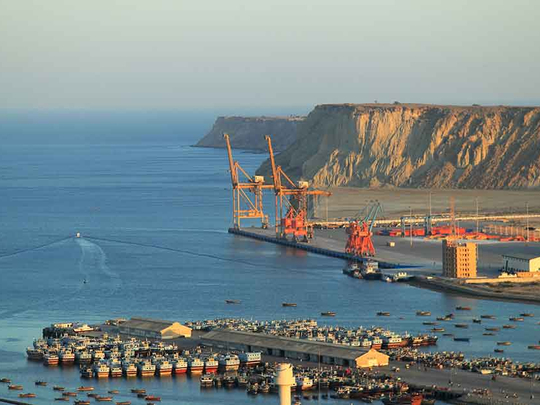
In its scope and ambition alone, the China-Pakistan Economic Corridor, commonly abbreviated to the acronym CPEC, is an unprecedented geopolitical achievement.
As Pakistan celebrates 70 years of independence, the Chinese government has displayed an extraordinary confidence in its regional neighbour, which could help put Pakistan on course to becoming the world’s next aggressively ascendant, economically buoyant Asian Tiger.
Consisting of a raft of pledged infrastructure projects totalling more than $60 billion (Dh220 billion), CPEC’s modernisation drive has attracted comparisons to the US’ post-war Marshall Plan, which saw the American government invest the equivalent of more than $100 billion, in today’s currency, rebuilding its war-savaged allies in Western Europe.
With projects ranging between roads, railways and fibre optic cables to energy pipelines, industrial clusters and special economic zones, the benefits of CPEC for the Pakistani everyman are manifold — from creating jobs to speeding up intercity travel and ending widespread energy shortages. But a project of
such ambition has rightfully sparked political debate and inspired economic scrutiny.
What we know
Inaugurated by Chinese president Xi Jinping during a historic visit to Islamabad in April 2015, the unveiling of CPEC cemented decades-old ties between
the two historic allies, now moving into the modern age.
An initial infrastructure investment of $46 billion was announced, before China later upped its pledge to $60 billion of work, much of which will be repaid in beneficial conciliatory loans. The premise is simple — while Pakistan benefits from the modernisation of its infrastructure, the Chinese enjoy easier strategic access to regional markets.
And they will do so remarkably rapidly — nearly half of the confirmed investment will be made in the next 18 months alone, with a total of $28 billion allocated to “early harvest” projects, mainly in energy and transportation, to be finished by the end of 2018. China’s acting ambassador to Islamabad, Lijian Zhao, recently stated that 19 projects under the CPEC banner, worth around $19 billion, are already either completed or in progress. Most of the remaining projects are planned to be completed by 2030.
According to Moody’s analysis, the bulk of early harvest projects will be paid for through foreign direct investment ($19 billion) and concessional loans ($7 billion), while the IMF estimates that a further $1.6 billion will be financed through commercial loans.
Much of this investment is focused on the symbolic corridor linking China’s western region of Xinjiang to the Pakistani port of Gwadar on the Arabian Sea, facilitating the shortest trade route to international markets from the Chinese region.
Yet most visible across the country will be the creation of a wide-ranging new road and rail network, taking the place of an aging transport infrastructure
which is blamed for the loss of around 3.5 per cent of Pakistan’s GDP. Higher profile projects include a 1,100km motorway between the key cities of Karachi and Lahore, while the Karakoram Highway linking Rawalpindi with the Chinese border will be reconstructed.
The main Karachi–Peshawar rail line will be overhauled to double the current top speed to more than 160km/hour.
In addition to transport, CPEC’s other main developmental prong will be to address Pakistan’s regular energy shortages — also blamed for shedding in excess of 2 per cent off Pakistan’s GDP — with 10,400mw of new energy generating capacity is to be brought online by the end of 2018.
What we don’t know
The greatest anxieties surrounding CPEC stem simply from its colossal size — the $60 billion bill represents more than a fifth (22 per cent) of Pakistan’s 2016 GDP. In paying for the projects, Moody’s estimates that CPEC will raise overall government debt to around $222 billion by 2018. Meanwhile, CPEC will also affect Pakistan’s credit profile, at least temporarily.
Moody’s ranks Pakistan B3 credit rating as “stable”, in part to due to the country’s strong growth and steady banking sector.
“CPEC will increase Pakistan’s competitiveness and lift potential GDP growth by relieving critical infrastructure constraints,” said the report’s author, William Foster, Vice-President and Senior Credit Officer at Moody’s.
“CPEC… [has] the potential to transform Pakistan’s economy… if implemented as planned, CPEC would lift Pakistan’s potential GDP growth significantly and catalyse higher private-sector investments and exports.”







